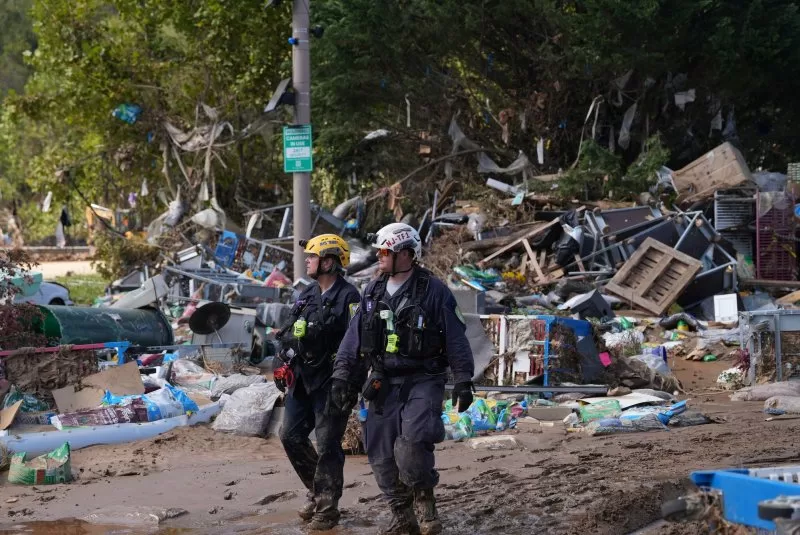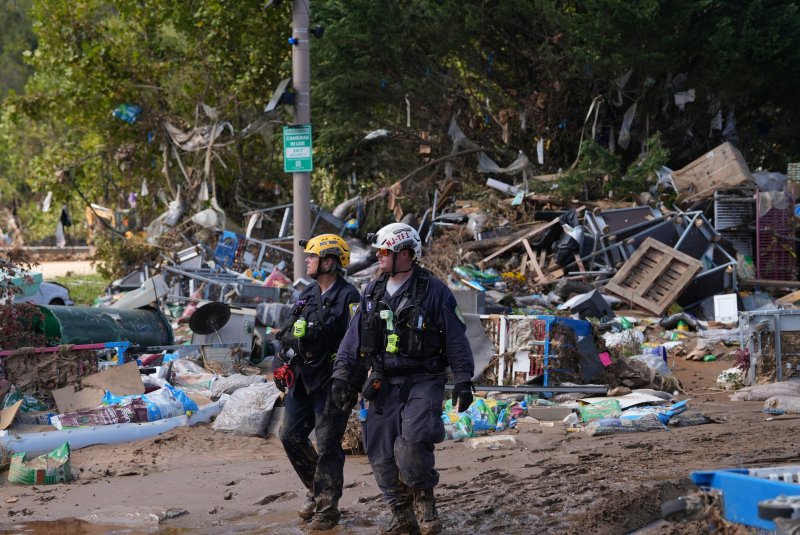Nov. 30 (UPI) — The deadly 2024 hurricane season ended with a whimper Saturday.
In the Atlantic, there were 18 named storms, including 11 hurricanes. Five of them were major hurricanes of Category 3 or higher.


Nov. 30 (UPI) — The deadly 2024 hurricane season ended with a whimper Saturday.
In the Atlantic, there were 18 named storms, including 11 hurricanes. Five of them were major hurricanes of Category 3 or higher.
During an average hurricane season, there are 14 named storms and seven hurricanes, including Category 3 or higher. The most number of storms: 30 in 2020 when the alphabet was exhausted.
“This is by far, not your classic hurricane season,” said Tom Kines, senior meteorologist with AccuWeather, told The Palm Beach Post. “There were a lot of intricacies that we’re not used to seeing. Some storms just didn’t behave like we expect them to.”
The four hurricanes that hit the United States — Beryl, Debby, Helene and Milton — caused damage exceeding $1 billion.
The last storm of the season was Tropical Storm Sara, which became a named one on Nov. 14 about 205 miles east-southeast of Honduras and dissipated on Nov. 18 off Mexico.
The season began on June 1.
Tropical Storm Alberto was the first storm, forming over the western Gulf of Mexico on June 19 and dissipating a day later.
Hurricane Beryl went from a tropical storm on June 30 to a Category 4 in 14 hours and then grew to a Category 5. It was the earliest Category 5 on record, the most rapid 24-hour intensification before July 1 on record and the strongest hurricane before August on record.
“We watched it in disbelief,” Brian McNoldy, a University of Miami senior research associate in a July interview with the Post. “This sort of thing is rare even in the middle of September and here we are at the end of June, beginning of July, and seeing things you hardly ever see.”
Beryl made landfall as a Category 1 on July 8 near Matagorda, Texas.
“Despite its ferocity, the hurricane resulted in fewer deaths compared to previous ones. This was thanks to advances in strengthening their early warning systems,” Celeste Saulo, secretary-general of the UN World Meteorological Organization, said.
Next were short-lived Tropical Storm Chris in the Yucatan from June 30-July 1 and Hurricane Debby, which hit near Steinhatchee, Fla. on Aug. 5 as a Category 1.
Hurricane Ernesto formed on Aug. 12 and went near Puerto Rico in mid-August.
One month later, Francine became a tropical storm on Sept. 9 and made landfall two days later in southern Louisiana as a Category 2 hurricane.
“No month to me looked like it was supposed to look,” said Colorado State University hurricane researcher Phil Klotzbach. “I had a paper about half written about the lull and then the lull ended. A switch flipped.
Tropical Storm Gordon, in the Atlantic from Sept. 11-17, was followed by deadly Hurricane Helene, which hit near Perry in Florida’s Big Bend region on Sept. 26 as a Category 4 storm. Tropical storm-force winds were 345 miles. It dissipated on Sept. 27.
The storm caused flooding in North Carolina, which had 103 verified deaths. It’s the most deadly storm since Hurricane Katrina in 2005.
Tropical Storm Isaac formed on Sept. 26 and peaked as a Category 2 hurricane near Bermuda.
On Sept. 27, Tropical Storm Joyce formed just west of the Cabo Verde Islands.
Hurricane Kirk formed on Sept. 29 and peaked on Oct. 5 as a Category 4, where it hit Europe.
Leslie and Milton joined Kirk early in the month, the first time there were three simultaneous storms in the Atlantic basin after September.
Leslie became a Category 2 storm in the Atlantic on Oct. 4
Milton formed within the Gulf of Mexico on Oct. 5 to become the second Category 5 hurricane of the season, the first time since 2019 to feature multiple Category 5 hurricanes.
Tornadoes spawned by the hurricane 150 miles away caused deaths and destruction. There were 46 recorded tornadoes.
Later in the month, two tropical cyclones formed on Oct. 19. Tropical Storm Nadine formed early in the day near the coast of Belize.
Hurricane Oscar formed near Turks and Caicos and made landfall in the Bahamas, becoming the smallest hurricane on record in the Atlantic basin
On Nov. 2, Tropical Storm Patty developed from a non-tropical gale low just northeast of the Azores.
Hurricane Rafael, which formed in the southwestern Caribbean, made landfall in Cuba on Nov. 6 at Category 3 strength.
“Year after year, the climate crisis continues to break new records, resulting in more extreme weather events, including rapidly intensifying tropical cyclones, intense rainfall and flooding,” Saulo with the UN said.
In the Pacific there were 11 named storms, including four hurricanes and two major ones. The season began on May 15.
Kristy became the first Category 5 Pacific hurricane in a non-El Niño year since Celia in 2010. Kristy formed off the coast of southern Mexico and was strongest in the open ocean on Oct. 24.
The other major storms were Gilma as a Category 3 on Aug. 18 in the ocean and John as a Category 3 in southwest Mexico on Sept. 24.